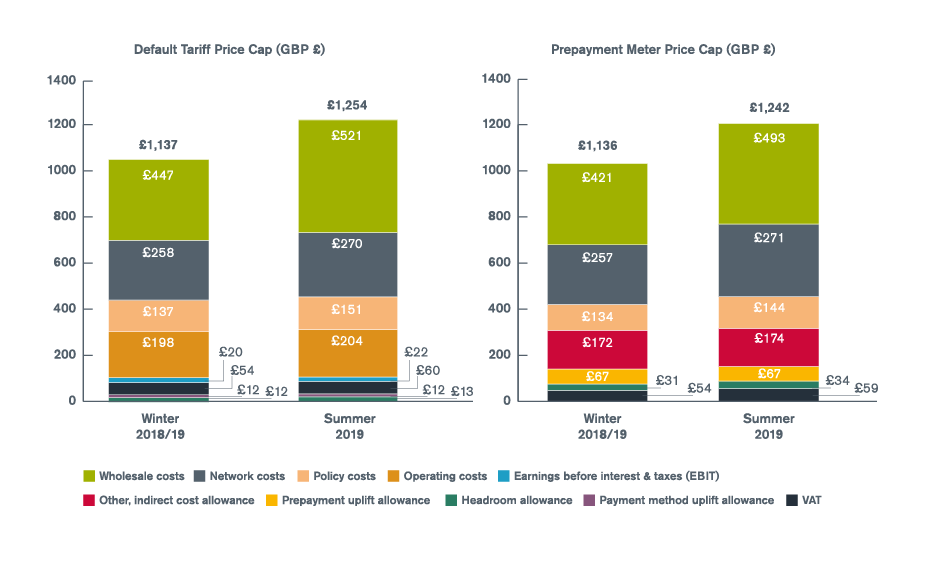By Paul Homewood
Last week, OFGEM announced that the price cap on energy bills would be going up in April:
- From 1 April, the levels of the default tariff price cap will increase by £117 and pre-payment meter cap by £106 to reflect higher costs
- Customers on default deals are still better off – Ofgem analysis suggests that without the default tariff cap they could be overcharged by £75-£100 a year
- Households could save more money by switching
The price cap for customers on default (including standard variable) tariffs, introduced on 1 January 2019, will increase by £117 to £1,254 per year, from 1 April for the six-month "summer" price cap period. The price cap for pre-payment meter customers will increase by £106 to £1,242 per year for the same period.
Using published methodologies, Ofgem adjusts the level of the caps twice a year to reflect the estimated costs of supplying electricity and gas to homes for the next six-month period. Ofgem will reset the level of the cap in August for the six-month winter price cap period which begins on 1 October.
Capped prices only increase when the underlying cost of energy increases. Equally when costs fall consumers' bills are cut as suppliers are prevented from keeping prices higher for longer than necessary.
While wholesale prices are higher than a year ago, it must also be remembered that green levies have also risen, and are partly responsible for this price rise, as OFGEM admit:
Around £74 of the £117 increase in the default tariff cap is due to higher wholesale energy costs, which makes up over a third (£521) of the overall cap….
Other costs, including network costs for transporting electricity and gas to homes and costs associated with environmental and social schemes (policy costs), have also risen and contributed to the increase in the level of the caps.

While higher wholesale costs explain £74 of the increase, network, policy and operating costs, all affected by govt climate policies, are responsible for an extra £32.
The effect of green levies and other climate costs can be seen in the OBR figures:
https://obr.uk/efo/economic-fiscal-outlook-october-2018/
Levies are expected to be £1.0bn higher in 2019/20. On top there will be an extra £0.2bn for carbon taxes.
| 2.13 Climate Change Levy receipts | ||||||
| £ billion | ||||||
| Forecast | ||||||
| 2018-19 | 2019-20 | 2020-21 | 2021-22 | 2022-23 | 2023-24 | |
| CCL Receipts | 2.0 | 2.2 | 2.2 | 2.2 | 2.2 | 2.5 |
| of which: | ||||||
| CCL Receipts (ex Carbon Price Floor) | 1.2 | 1.4 | 1.5 | 1.5 | 1.6 | 1.8 |
| CCL Receipts – Carbon Price Floor | 0.9 | 0.8 | 0.7 | 0.6 | 0.6 | 0.7 |
In total then, electricity users will have to pay an additional £1.2bn this year.
Not quantified are any increases in the cost of smart meter roll outs, grid infrastructure and so on.
While some of these added costs will be stood by industrial users, it is easy to see why domestic bills will rise by £32 to pay for the government's climate agenda.
And that is just this year's increase.
In total terms, the country will be paying £14.4bn this year, an obscene amount which should have been put to better use.
from Climate Change Skeptic Blogs via hj on Inoreader http://bit.ly/2SOJjLr


No comments:
Post a Comment